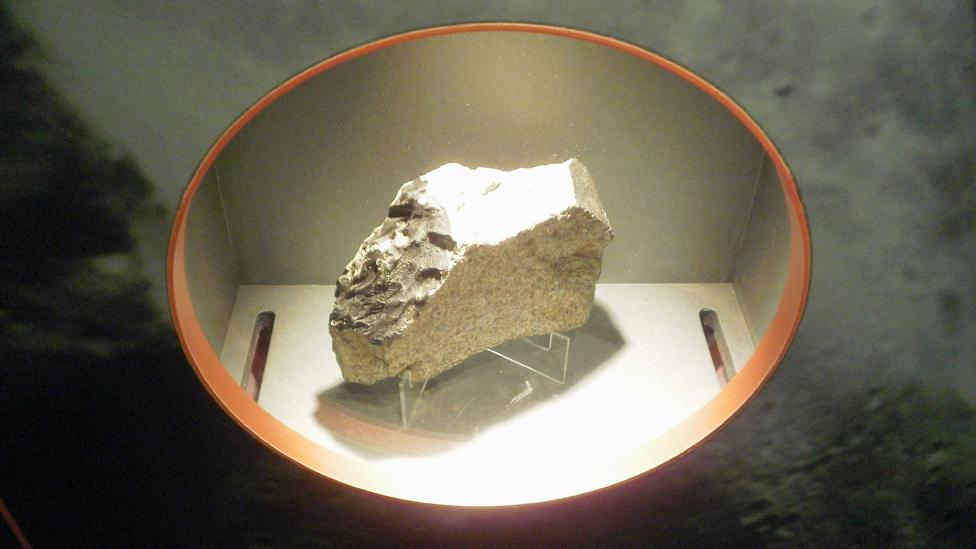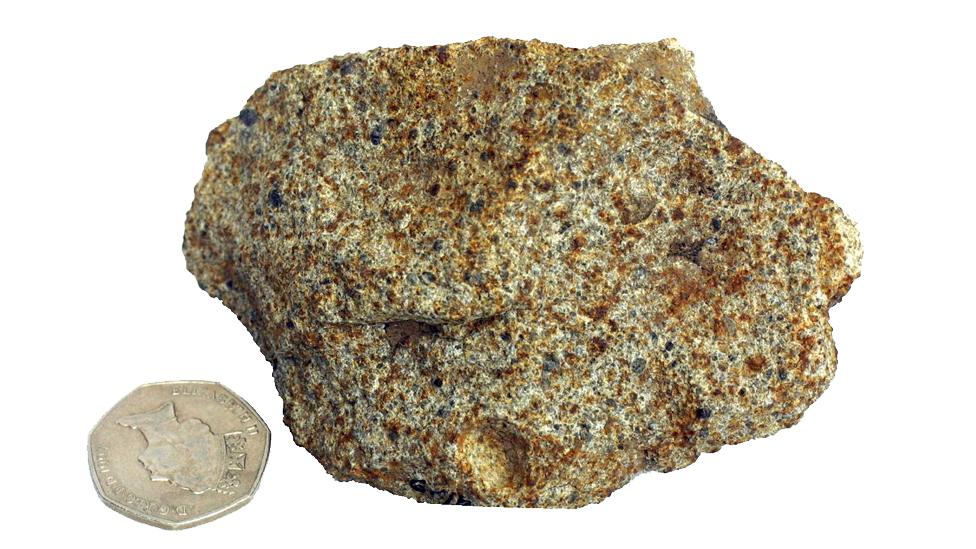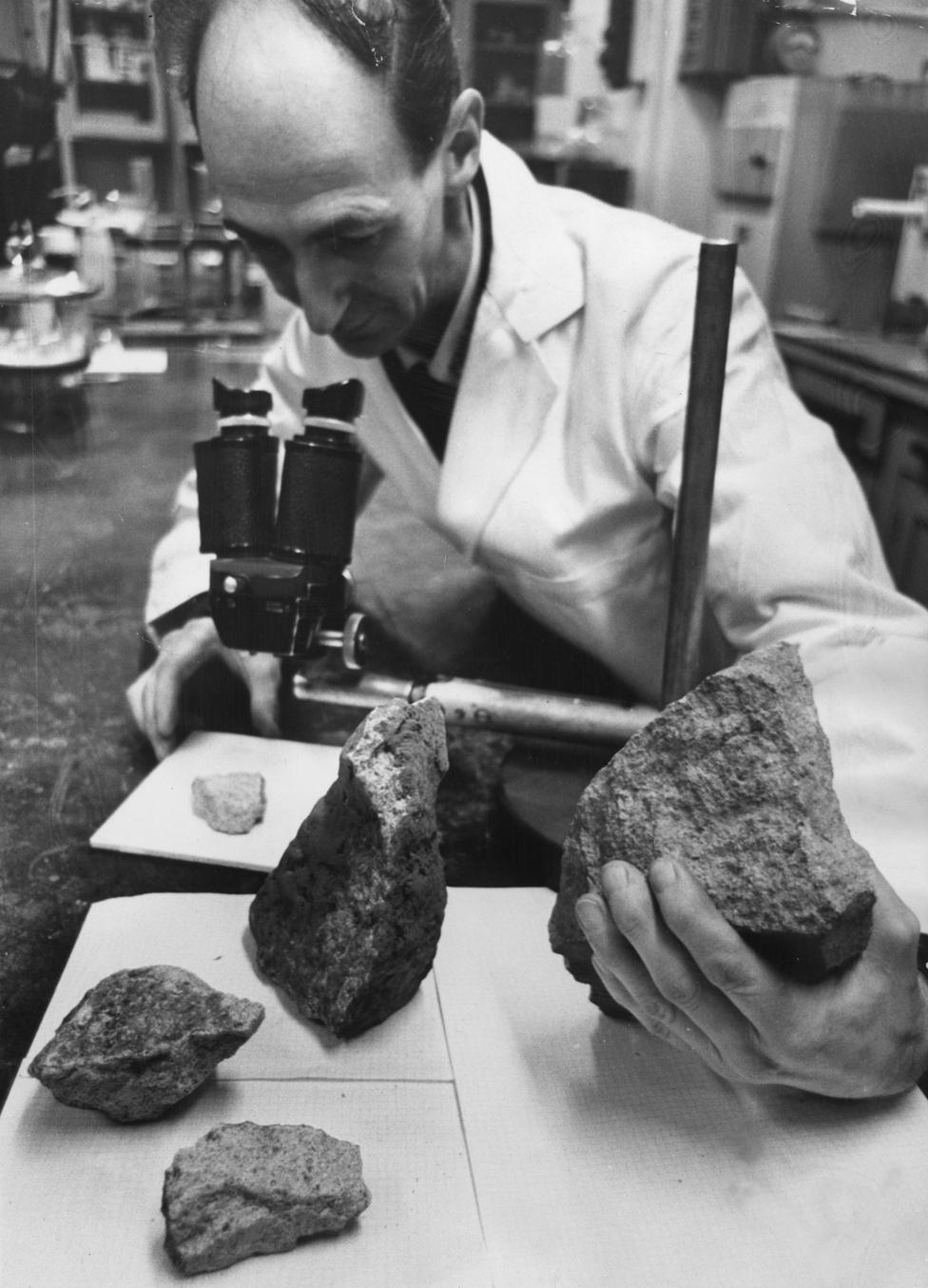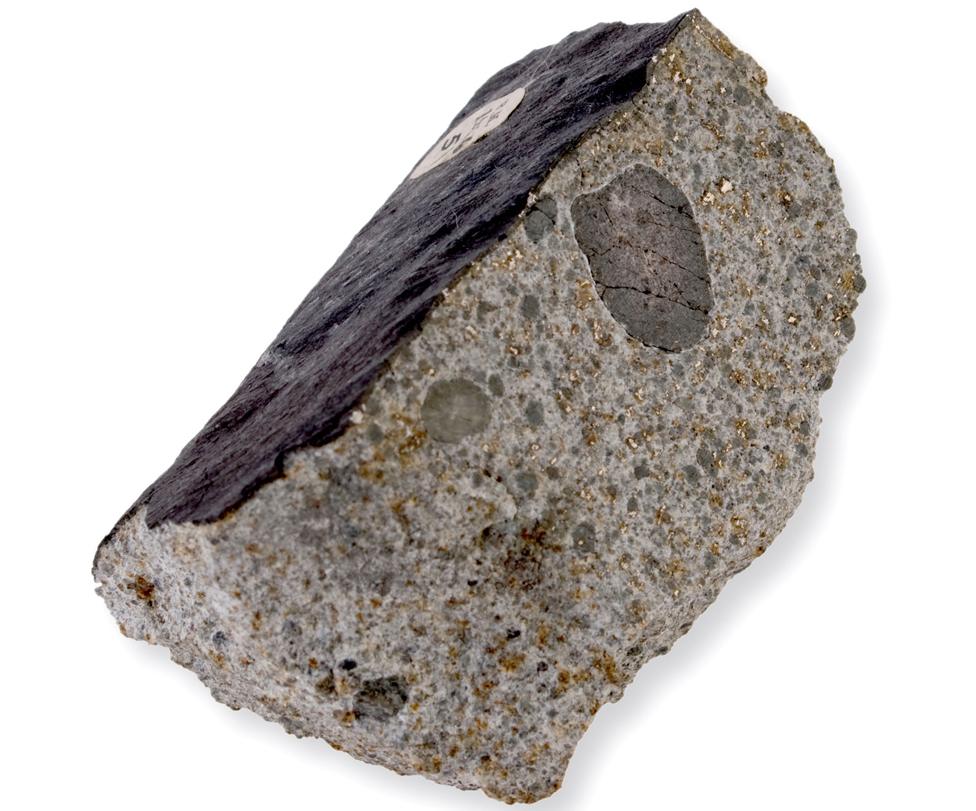The hunt for the Christmas meteorite
- Published

The biggest meteorite to hit the UK landed in a small village in Leicestershire one Christmas Eve. Fifty years on, the search for its highly valuable fragments is far from over.
The last thing Percy England expected on Christmas Eve was for a 4.5bn-year-old meteorite to put a hole through his brand new Vauxhall Viva.
There had been no warnings of impending doom. The meteor plummeted through the Earth's atmosphere on a cold December afternoon in 1965. It could have hit Leicester but instead broke up over the nearby village of Barwell just after sunset.
The pieces found scattered across houses and streets on Christmas Day sparked a frenzied meteorite hunt. The fragments are still being studied by the Natural History Museum. They are also highly sought after by collectors. In 2009, a 2lb (0.9kg) piece made £8,000 at auction, external.
Eyewitness Joseph Grewcock describes the moment the meteorite landed
The value of the largest Barwell piece is not publicised. But it will be returning to where it fell, external half a century ago on Saturday. People are being encouraged to bring any meteorite pieces that they might have squirreled away to the anniversary event. "It would be brilliant if they could," says Dan Kendall, curator of the National Space Centre. But their stories of what happened are just as valuable, he adds.
Most recollections of the meteorite strike start - appropriately enough for Christmas Eve - with a bright light in the sky. It was followed by a sonic boom.
When a meteor travels faster than the speed of sound it creates a shock wave, explains planetary scientist Leigh Fletcher from the University of Leicester. In 2013, the shock wave from the Chelyabinsk meteor in Russia was picked up by scientists more than 9,320 miles (15,000 km) away in Antarctica.
In Barwell, the booming sound was heard by Fletcher's mother-in-law. She was taking a dog for a walk in a cow field when she heard a tremendous crash. A group of carol singers set out across the village soon after and felt something crunching under their feet as they went.

At one point, 26-year-old Rosemary Leader picked up a piece of the rubble to examine it under the light of the street lamp before throwing it away. "I was out carol singing, I didn't want to carry a lump of rock around," she says.
A few people didn't notice anything amiss until Christmas Day. The first thing Percy spotted was the hole through the bonnet of his new car. Other people had woken up to find similar holes in the tarmac, windows and roof slates.
Within a few hours the news had filtered out that a meteorite had crashed over the village.
"My dad immediately got on to the insurance," says his son Trevor. "They came back saying it was an act of God. So the next thing he did was to write a letter to the insurance company which began 'Dear Mr God'."
Percy was never paid. But others managed to cash in during the next month. The news took a few days to break properly. As soon as it did the town was flooded by meteorite hunters.

Museums offered money for fragments of the space rock. "There was a bit of a gold rush, really, in Barwell," says Kendall. Even the astronomer Patrick Moore joined the hunt.
About 97lbs (44kg) of meteorite was recovered. "When they put it back together, it was about the size of a Christmas turkey," says Kendall. It's rare to recover so much of a meteorite in a place like the UK.
The mud and vegetation makes them hard to spot, explains Natasha Almeida, assistant meteorite curator at the Natural History Museum.
It's even rarer to see a meteor fall and then actually find it afterwards.
Experts describe the meteorite
"There have been only 24 official falls in the British Isles," says Almeida. Finding a meteorite quickly means it can be preserved before it gets weathered by the Earth.
"You've basically almost got a time capsule," adds Kendall. The Barwell meteorite, he explains, is older than the Earth itself.
But the Barwell meteorite is special for another reason. A pebble was found inside one of its fragments. "It has characteristics of different types of meteorites," says Almeida, who is studying some of the Barwell pieces.
"There could have been another body that formed, another asteroid, that smashed into pieces and after a bit of that was incorporated into the asteroid that the Barwell came from."

The pieces that were recovered might slowly be revealing their secrets. But there are thought to be plenty more still missing.
"There are an awful lot of people with their little bits of meteorite tucked away somewhere," says Margaret Pickering. Her husband was lucky in the hunt all those years ago. "We do have a little bit of meteorite," she adds.
Margaret says she will bring it to a celebration of the crash landing on Saturday. The village has changed a lot since the 1960s. Many of the fields littered with meteorite no longer exist. But "there are probably lots of pieces still there waiting," she adds.
Her story is one of the many that will be recorded by the National Space Centre. Eyewitness accounts can be crucial for research. The videos filmed by witnesses helped scientists work out, external the asteroid that the Chelyabinsk meteor might have come from.
Every story and piece of the meteorite connects Barwell to something much bigger, adds Fletcher. "It's the debris from the birth of our solar system," he says. "It's no wonder people keep a piece of it tucked away in a box."

UK's biggest meteor shower

From 4 - 17 December, a particularly spectacular and colourful meteor shower will appear across the UK.
At peak activity, it's possible to see two meteors every minute on average.
The shower is unique, as it's caused by an asteroid rather than an icy comet.

Subscribe to the BBC News Magazine's email newsletter to get articles sent to your inbox.